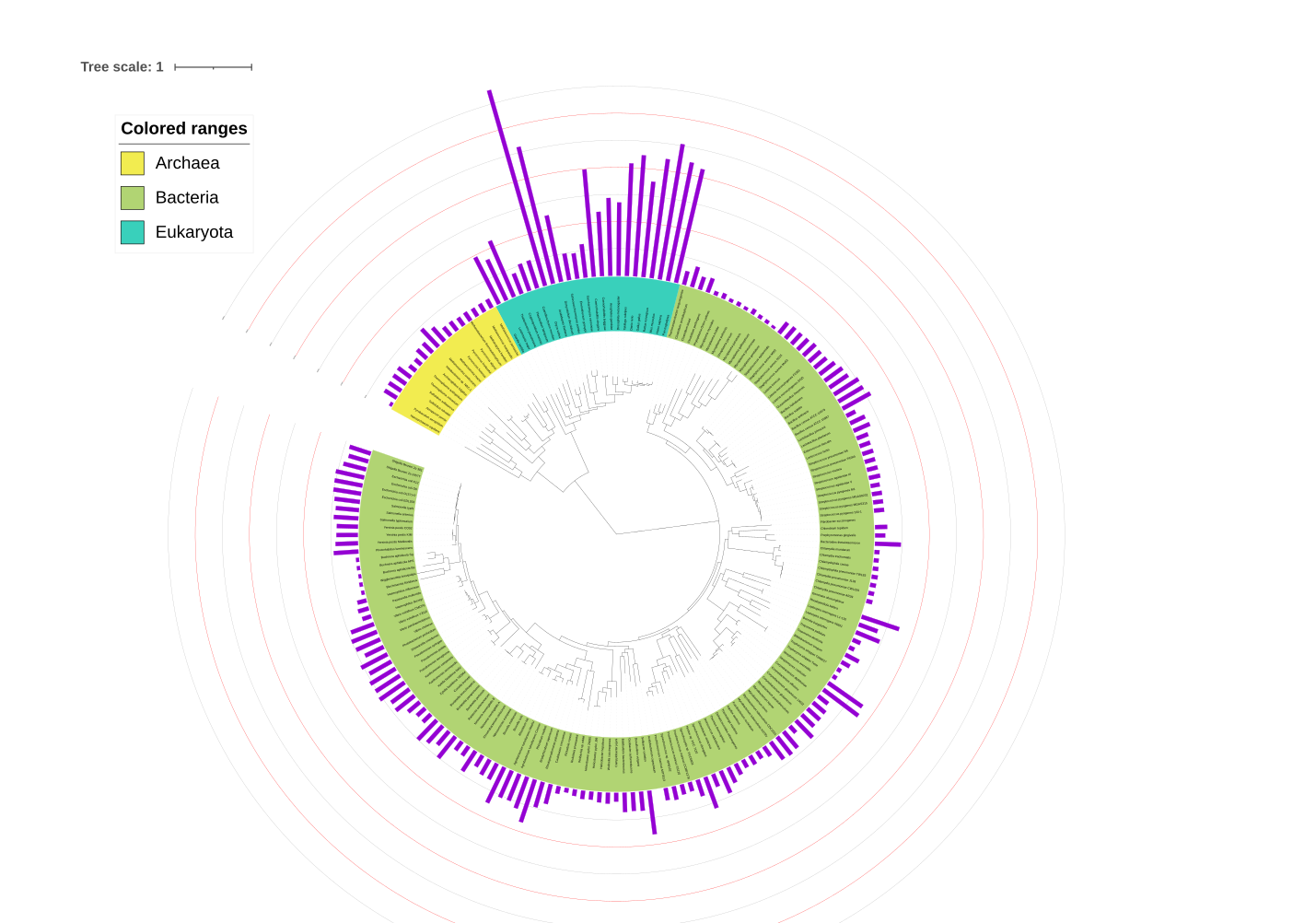2.1.5: Chapter Summary
- Page ID
- 41422
All organisms on Earth are related at some point in evolutionary history. In western science, a taxonomic classification system is used to nest organisms into related groups of increasing specificity. Domain is the least specific (most inclusive) level of classification, followed by kingdom, phylum, class, order, family, genus, and finally, species. Organisms placed together in more specific levels of classification (such as family or genus) are thought to be more closely related, sharing a more recent common ancestor than they do with organisms outside those groups.
One way to depict evolutionary relationships between organisms is by using phylogenetic trees. Every phylogenetic tree is a hypothesis based on traits. Traits can be morphological, anatomical, or molecular. Visible characteristics such as morphology and anatomy were originally used to form many of these hypotheses. Included amongst these similar traits are homologous structures and analogous structures. Homologous structures are similar due to evolutionary relatedness, though sometimes they can look quite different due to divergent evolution from different selective pressures. Analogous structures look similar due to similar selective pressures, but have evolved convergently from different lineages.
Genetic information offers a relatively new wealth of molecular traits (single nucleotide polymorphisms) to consider and has upended and reorganized many of the previous hypotheses on evolutionary relationships. However, genetic information can be exchanged between groups of organisms through horizontal gene transfer and endosymbiotic events, rather than vertically through direct evolutionary decent. This complicates the traditional phylogenetic tree representation of evolutionary descent. Other models, such as the web of life and ring of life, have been proposed as alternatives that account for horizontal gene transfer.
Deciphering the relatedness of organisms is a complex task that requires considering a variety of information. The phylogenetic tree of life, like any hypothesis, is subject to change as new information emerges.

After completing this chapter, you should be able to...
- Discuss the components and purpose of a phylogenetic tree.
- Interpret relationships between organisms using a phylogenetic tree.
- Correctly order the different levels of taxonomic classification.
- Discuss the benefits of having a comprehensive classification system.
- Compare homologous and analogous traits.
- Discuss the purpose of cladistics.
- Describe the concept of maximum parsimony.
- Describe horizontal gene transfer.
- Illustrate how prokaryotes and eukaryotes transfer genes horizontally.
- Describe the process of endosymbiosis and explain how this can produce membrane-bound organelles.
- Identify the web and ring models of phylogenetic relationships and describe how they differ from the original phylogenetic tree concept.
Attribution
- Content authored by Maria Morrow, CC-BY-NC


